Cardigan Secondary School was originally founded at Cardigan County School in the mid seventeenth century, and has suffered several name changes over the years, before becoming a Secondary School in 1949. The Roll of Honour of the then Cardigan Council School was published in the Tivy Side after the war, and although I do not possess any photographs of any memorials in the school, this page uses that published roll.
The Great War, 1914-1918
Ronald Frederick William Carroll, Sailor, Mercantile Marine. Ronald was born at Cardigan in 1899, the son of John Frederick and Elizabeth Carroll (Nee Bartlett), of Brondeg, Grangetown, Cardigan. He served with the Mercantile Marine, aboard the SS Treveal, a St. Ives registered Armed Merchant steamer. On 4 February 1918, Treveal was on route from Algiers for Barrow she was torpedoed by the German submarine U-53 and sunk, off the Skerries, Anglesey. Ronald was amongst 33 men who died aboard her that day. He was 19 years old, and is commemorated on the Tower Hill Memorial, London.
Albert Thomas Charles, Private, 2197, Welsh Regiment. Albert was the son of David Charles and Mary Anne Charles, of 1, Lion Terrace, Cardigan. He worked as a School Teacher prior to the war, and enlisted at Cardigan into the 1/4th Battalion, Welsh Regiment, which was the local Territorial Battalion, attached to 159 Brigade, 53rd (Welsh) Division. The Division landed at Cape Helles, Gallipoli, on 9 August 1915, and was immediately thrown into action, spending the next few days in isolated pockets, fighting against a Turkish counter-attack during the Battle of Sari Bair, and then at the Attack on Scimitar Hill. Albert was wounded soon after landing, and was evacuated by Hospital Ship to Malta. He died of his wounds there on 21 August 1915, aged 20, and is buried at Pieta Military Cemetery, Malta.
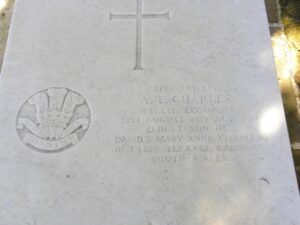
Norman Nicholas Daniel, Private, 2217, Welsh Regiment. Norman was the son of Henry Rowland and Martha Daniel, of St. Mary’s Street, Cardigan. He was a bank clerk prior to the war, and also a pre-war member of the 1/4th Battalion, Welsh Regiment. He was mobilised in August 1914, joining the battalion at Pembroke Dock. Norman was accidentally killed by a bullet whilst asleep in his tent at Scoveston Camp, Pembroke on 18 October 1914, aged 21. He is buried at Cardigan Cemetery.
Rowland Griffith Daniel, Sergeant, 290291, Welsh Regiment. Rowland was born in 1895, the son of Thomas and Elizabeth Daniel, of The Mount, Newport. He enlisted at Cardiff into the 7th Battalion, Welsh Regiment, which was formed as a Cyclist battalion at Newport Road, Cardiff on 4 August 1914. The Battalion remained in the U.K. for the remainder of the war, stationed at Berwick and Montrose, and was based at Seaton Carew in early 1917. Rowland took ill and died on 27 March 1917, aged 22. He is buried at St. Mary’s Churchyard, Newport.
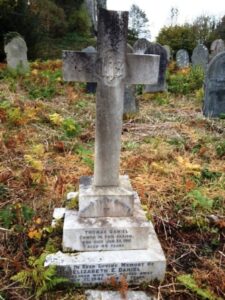
John Sidney Davies, 53333, Private, Royal Fusiliers. John was the son of Henry and Margaretta Davies, of Heathfield, St. Dogmaels. At the outbreak of war is recorded as living in London. He enlisted in London into the Royal Fusiliers, originally with the service number 656, which later changed to 53333 on his posting to their 9th Battalion, Royal Fusiliers. The battalion was attached to 36 Brigade, 12th (Eastern) Division. The Division had been in France since May 1915, and had fought in the Battle of Loos. In 1916 the division saw heavy fighting during the Somme offensive, and John probably joined the battalion during the summer of 1916. After suffering terrible casualties themselves, the Division were withdrawn, before being brought back into the line near Pozières. They again fought at Le Transloy, before moving north to Arras in early 1917. The Battle of Arras opened on 9 April 1917, and the Division took the village of Rouex, before taking part in the Battle of Arleux on 3 May. John was killed in Action on 3 May 1917, aged 19. His body was lost on the Battlefield around Rouex, and so he is commemorated on Bay 3 of the Arras Memorial, France.
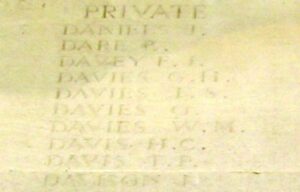
Simon Davies Evans, Lieutenant, Royal Air Force. Simon was born on 28 August 1896, the second son of James and Mary Evans, of Penbank, Beulah, Newcastle Emlyn. He was a Clerk with the Civil Service at Cardiff before joining the Royal Naval Division, and after seeing service in the Mediterranean with Hawke Battalion, was commissioned into the Royal Flying Corps on 28 August 1917. He qualified as a Pilot, and joined 12 Squadron in France on 20 April 1918, which flew the BE2c. Simon rapidly gained a strong reputation for his flying skills. Sadly he took ill from Pneumonia, and died at No. 3 Canadian Casualty Clearing Station on 1 November 1918, aged 22. Simon is buried at Rocquigny-Equancourt Road British Cemetery, Manancourt, France.
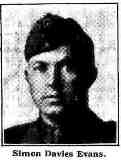
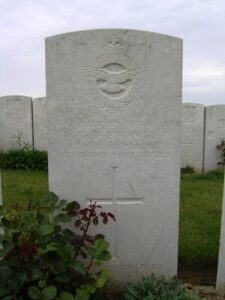
Thomas Griffiths, MM, Guardsman, 2759, Welsh Guards. Thomas was the son of Benjamin and Annie Griffiths, of Tymawr, Blaenporth. He enlisted at Brecon into the Welsh Guards, and was posted to France with the 1st Battalion, Welsh Guards in July 1915, which became attached to the 3rd Guards Brigade, Guards Division. The Welsh Guards saw their first major action during the Battle of Loos on 25 September 1915, remaining in the area during the coming months, where they also fought in the subsequent Action of Hohenzollern Redoubt. In July 1916 the Division moved to the Somme, where they fought at the Battle of Flers-Courcelette, and then at the Battle of Morval, capturing Lesboeufs Village. They remained here for the winter, and in March 1917 took part in the advance caused by the German Retreat to the Hindenburg Line. Later that year they moved north to Ypres, where they fought at the Battle of Pilckem, and then at the Battle of the Menin Road, Battle of Poelcapelle and the First Battle of Passchendaele. November saw them move south again, where they took part in the Battle of Cambrai, remaining in the Gouzeaucourt area after the Battle petered out. Thomas was killed in action at Gouzeaucourt on 10 March 1918. He was 28 years old, and is commemorated on the Arras Memorial, France. Thomas had been awarded the Military Medal during the war. It was published in the London Gazette of 16 November 1917, and was probably for Pilckem Ridge. His brother David also served with the Welsh Guards.
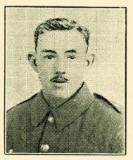
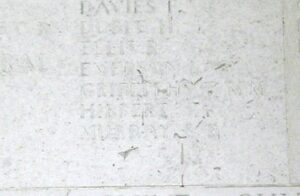
David Jenkins, Second Engineer, Mercantile Marine. David was the son of John and Mary Jenkins (nee Rees), of Rose Vale, Northgate Terrace, Cardigan. He served with the Mercantile Marine aboard the SS Kildonan, a Cardiff registered Merchant steamer. On 29 September 1917, she was two miles off the Pendeen Lighthouse, Cornwall, when she was torpedoed and sunk by the German Submarine UB-35, with the loss of 14 lives. David was 23 years old, and is commemorated on the Tower Hill Memorial, London.
David Thomas Jenkins, Corporal, 1949, Royal Army Medical Corps. David was born at Cardigan in 1888, the son of Thomas Morgan and Mary Anne Jenkins (nee Griffiths), of 9, Grange Terrace, Cardigan. He was a chemist prior to the war. and enlisted into the Royal Army Medical Corps on 23 November 1914. David was soon promoted to Corporal Dispenser, and attached to the 4th London Field Ambulance, Royal Army Medical Corps, and was posted to France, where he served at the Military Hospital at Merville. David became ill at Merville, and was invalided out of the army, diagnosed as suffering from tuberculosis. He was sent to a Hospital at Switzerland in an attempt to cure him, but he died there on 11 June 1921, aged 32. Nothing further is known of David, as he is not commemorated by the CWGC.
Dewi Peter John, Private, 49052, King’s Liverpool Regiment. Peter was born in 1892, the son of Daniel and Ann John, of Penrhiw, St. Dogmaels. He moved to Narberth prior to the outbreak of war, and enlisted at Preston into the Royal Field Artillery, with the service number 136559. Peter then transferred into the 17th Battalion (Liverpool Pals), Kings Liverpool Regiment, which formed part of 89 Brigade, 30th Division. The Battalion was the first ‘Pals’ Battalion to be formed, by Lord Derby, on 29 August 1914 at Prescot. They moved to France during November, 1915, and took part in the opening part of the Battle of the Somme, capturing Montauban. They stayed on the Somme for the duration of the battle, and followed up the retreating Germans during the early part of WW1, back toward the Hindenburg Line, before taking part in the opening of the Battle of Arras, fighting around the Scarpe. Peter was killed in Action during the Battle of the Scarpe on 28 April 1917. He was 24 years old, and is buried in a joint grave in Cherisy Road East Cemetery, Heninel.
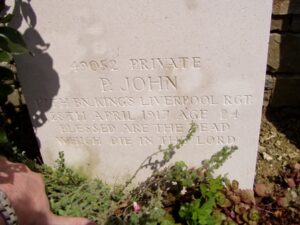
David Morris Jones, Ordinary Seaman, Mercantile Marine. David was the son of John Parry Jones, and Martha Jane Jones, of Plasnewydd, Beulah. He served with the Mercantile Marine aboard the S.S. Canganian, which was a Cardiff registered merchant steamer. On 17 November 1916, Canganian was en-route from Methil to Scapa Flow with a cargo of coal, when she struck a mine which had been laid by the German submarine UC-29, and sank with the loss of eighteen lives. David was just 16 years old when he drowned in the sinking. His body was washed ashore in Scotland, and he was originally buried in St. Cyrus Parish Churchyard. A Scottish woman was on holiday in Aberaeron at the time, and was sent a newspaper by a friend of hers. One article took her interest, and it was the story of the burial of a sailor in her home village, who could only be identified by the label of Ben Davies, Tailor, Newcastle Emlyn on his coat. She showed the newspaper to the local JP, who contacted David’s father, who travelled to Scotland to identify the body. His body was duly identified, and re-interred at the request of his parents in Beulah Congregational Chapelyard on 9 December 1916.
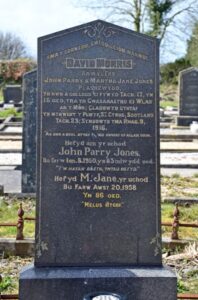
Evan Lloyd Jones, Private, 91695, Durham Light Infantry. Evan was the son of John Lloyd Jones and Jane Jones, of Ossian House, Eben’s Lane, Cardigan. He enlisted at Brecon into the Pembroke Yeomanry, and was transferred to the 1/6th Battalion, Durham Light Infantry, which was attached to 151 Brigade, 50th (Northumbrian) Division. During March 1918 they were stationed near St. Quentin, and were hit here by the German Spring Offensive of 21 March 1918, during the Battle of St Quentin. They took part in a gallant rearguard action during the Actions at the Somme Crossings, and then at the Battle of Rosieres, suffering terrible casualties. Evan was captured by the Germans on the Somme during May 1918, and was taken to a Prisoner of War Camp in Germany, where he died on 4 October 1918, aged 19. Evan is buried at Worms (Hochheim Hill) Cemetery, Germany.
Harold Madoc Jones, MID, Lieutenant, Royal Welsh Fusiliers. Harold was the son of John Roberts Jones, J.P. of Bodfeirig, Anglesey, and Eunice Martha Jones. He was educated at Christ’s College, Brecon and University College of Wales, Aberystwyth, where he graduated with Classical Honours, before becoming a teacher at Cardigan School, lodging at 2, Park Terrace, Cardigan. Harold originally enlisted into the Royal Welsh Fusiliers as a Private, but was commissioned into the 17th Battalion, Royal Welsh Fusiliers on 18 March 1915. The battalion was attached to 115 Brigade, 38th (Welsh) Division. On 4 December 1915 the battalion moved to France, and the entire Division moved to the Fleurbaix sector, where it was initiated into trench warfare. During June 1916 the Division marched south to the Somme, and on 7 July 1916 attacked Mametz Wood. The initial attack failed, and it was three days later, on 10 July, that a fresh attack was mounted. After two days of heavy hand to hand fighting within the wood, the Germans withdrew, and the battered Welshmen moved via Hebuterne to Boesinghe, on the Yser Canal, where it remained until launching its attack on Pilckem Ridge on 31 July 1917. Harold was killed at Pilckem on 31 July 1917. He was 38 years old, and is commemorated on the Ypres (Menin Gate) Memorial, Belgium. Harold had been Mentioned in Despatches for his bravery twice during the war.
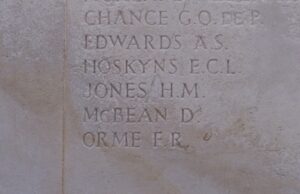
Simon James Jones, Lieutenant, South Lancashire Regiment. Simon was the son of David Orllwyn and Elizabeth Jones, of Marffo, Glynarthen, Henllan. He was commissioned into the South Lancashire Regiment, and was posted to France, joining the 2nd Battalion, South Lancashire Regiment. The battalion had been in France since the outbreak of war, attached to 7 Brigade, and on 26 October 1915 was transferred to 64 Brigade, 21st Division. The Division had fought throughout the Somme Offensive in 1916, and in March 1917 followed the German Retreat to the Hindenburg Line. In April the Division fought at Arras and Bullecourt, and later that year fought at the Third Battle of Ypres, and the Battle of Cambrai. The division was one of the units hit by the German Spring Offensive on the Somme in March 1918, fighting at the Battle of St Quentin and the First Battle of Bapaume, before being evacuated to Flanders to rest. Unluckily though, the Germans launched a fresh offensive on the Lys in April 1918, and the division was caught up in the thick of the fighting again, during the Battle of Messines, and the Second Battle of Kemmel. The battered division now moved south to rebuild, but again was unlucky, as the Germans launched a fresh offensive on the Chemin-des-Dames, and the division was caught up in the action again, fighting in the Battle of the Aisne. Simon was badly wounded here, and died on 5 June 1918, aged 24. He is buried at Marfaux British Cemetery, France.
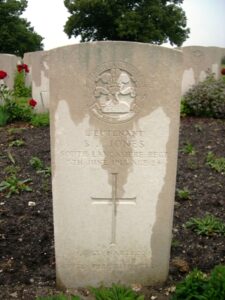
William Mathias Jones, Gunner, 118779, Royal Field Artillery. William was the son of Levi Thomas Jones and Anne Jones, of Nantgwyn, Blaenffos. He resided at Cardigan prior to the war, and enlisted into the Royal Artillery. William was posted to France in 1916, where he joined C Battery, 108th Brigade, Royal Field Artillery. He was killed in action during the opening of the Third Battle of Ypres, when a German shell crashed into his gun pit on 1 August 1917. William was 23 years old, and is buried at Potijze Chateau Wood Cemetery, Belgium.
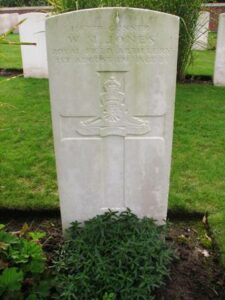
Llewellyn Morgan, Able Seaman, L21/393, Royal Naval Volunteer Reserve. Llewellyn was born on 31 July 1892, the son of John and Sophia Morgan, of Llwyn-On, Priory Street, Cardigan. He resided at the Grange, Colcot, Barry, Glamorgan prior to the war, where he worked as an electrical engineer, and enlisted on 17 February 1915 into the Public Schools Battalion, London Regiment. He transferred to Hawke Battalion, Royal Naval Division on 4 May 1915, and served at Gallipoli, before being invalided in August 1915 suffering from Enteritis. Llewellyn then rejoined Hawke Battalion, before being invalided to Britain with Nephritis on 26 December 1915. After recovering, he was sent to France with a Draft on 10 July 1916, and rejoined Hawke Battalion. Llewellyn fought at the Battle of the Ancre that year. The Royal Naval Division remained on the Ancre over the winter of 1916-17. Llewellyn was badly wounded there when a shell fragment hit him in the eye. He died of wounds in the 47th Casualty Clearing Station on 6 February 1917, aged 24, and is buried at Varennes Military Cemetery, France.
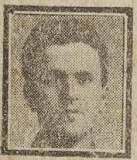
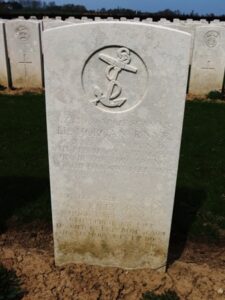
William David Morgan, Able Seaman, R/2410, Royal Naval Division. William was born on 8 October 1896, and had been adopted by his Aunt, Mrs. Jenkins, of Brynderi Cilgerran. He enlisted into the Territorial Force on 1 March 1916, joining the 2/25th London Cyclist Battalion, then transferred to the Royal Naval Volunteer Reserve, and was posted to the Drake Battalion, 63rd (Royal Naval) Division, joining them in France on 2 September 1917. The division was at Ypres, where they were to take part in the assault on Passchendaele Village, and on 30 October the Drake Battalion supplied a party of 6 officers & 250 Other Ranks as Stretcher Bearers on account of 190 Brigade Operations at Passchendaele. The War Diary for the day states that Casualties that day amounted to three Other Ranks killed, eight Other Ranks wounded and one Other Rank missing. One of the wounded was William, who had received multiple wounds to his legs, with one leg being fractured. He was admitted that same day to 47th Casualty Clearing Station near Poperinghe, where he sadly died of his wounds on the following day of 31 October 1917. William was just 21 years old, and is buried at Dozinghem Military Cemetery, Belgium.
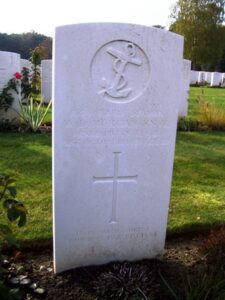
David Griffith Owen, Second Lieutenant, Oxfordshire and Buckinghamshire Light Infantry. David was born on 6 May 1889, the son of John and Margaret Anne Owen, of Bryneirw, St Mary’s, Cardigan. He had emigrated to Australia prior to the war, and on 30 September 1914 enlisted at Brisbane into the 15th Battalion, Australian Infantry. David served at Gallipoli with the battalion, and after the evacuation in January 1916 was discharged on 21 January 1916 to a commission into the 3rd Battalion, Oxfordshire & Buckinghamshire Light Infantry. David became ill, suffering from jaundice, probably contracted at Gallipoli, and died in hospital in England on 23 November 1916, aged 27. David is buried at Cardigan Cemetery.
Henry James Owen, Second Lieutenant, Royal Welsh Fusiliers. Henry was the son of Captain Thomas Owen and Ellen Owen, of Ivy Cottage, Aberporth. He was commissioned into the Royal Welsh Fusiliers, and was posted to France, where he joined the 16th Battalion, Royal Welsh Fusiliers on 16 July 1918. The battalion had been in France since December 1915, attached to 113 Brigade, 38th (Welsh) Division, and had taken part in the capture of Mametz Wood in July 1916, and Pilckem Ridge in July 1917. Over the winter of 1917-18 the Division was stationed around the Armentieres area, and at the end of March 1918 was moved south to the Somme, to bolster the British defences there after the German offensive of 21 March. The Division remained here over the coming months, holding the line north of Albert towards Beaumont Hamel. Henry joined the battalion here. On 21 August 1918, elements of the 38th Division crossed the River Ancre, and consolidated positions in readiness for a general assault. On 23 August the 16th RWF moved into position, and on the morning of 24 August 1918 crossed the River Ancre, and assaulted the German positions at La Boiselle. Henry was killed in action here by German machine-gun fire that day. He was 28 years old, and is buried at Ovillers Military Cemetery, France.
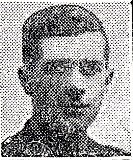
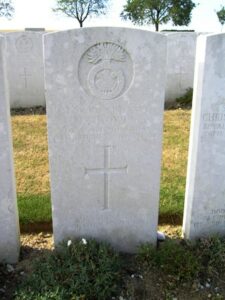
Thomas Richard Parry, Private, 29563, South Wales Borderers. Richard was the son of Thomas and Ellen parry, of Morfa Uchaf, Penbryn, He resided at Henllan prior to the war. He enlisted at Brecon into the 11th Battalion, South Wales Borderers, which moved to France during December 1915 attached to 115 Brigade, 38th (Welsh) Division. The Division was initiated into trench warfare in the Fleurbaix sector, and in July 1916 famously captured Mametz Wood. After suffering heavy casualties at Mametz, the Division moved to Boesinghe, and on 31 July 1917 launched its successful assault on the Pilckem Ridge. The Division wintered around Armentieres, where in February 1918 the 11th SWB were disbanded, with some men going to other units of the 38th Division, and others to the 2nd Entrenching Battalion. When the 38th Division moved to the Somme, the 2nd Entrenching Battalion remained at Merville. He it was thrown into action during the German offensive on the Lys, which was launched on 9 April 1918, and took part in heavy fighting. Richard was killed in action during heavy fighting on 11 April 1918, aged 21. He is commemorated on the Ploegsteert Memorial, Belgium.
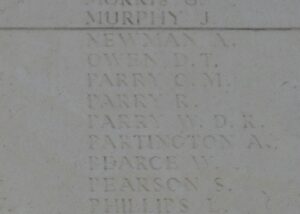
George Ivor Milton Phillips Richards, Private, 200484, Welsh Regiment. George was the son of Captain David and Annie Ida Richards, of Kelvin, Cardigan. He enlisted at Cardigan into the 1/4th Battalion, Welsh Regiment, which was the local Territorial Battalion, attached to 159 Brigade, 53rd (Welsh) Division. The Division landed at Cape Helles, Gallipoli, on 9 August 1915, and was immediately thrown into action, spending the next few days in isolated pockets, fighting against a Turkish counter-attack during the Battle of Sari Bair, and then at the Attack on Scimitar Hill. The Division remained here throughout the coming months, and suffered severe losses in manpower strength during the great November 1915 blizzard on Gallipoli, when its total strength was reduced to less than that of a full-strength Brigade. On 11 December 1915 the Division was evacuated to Mudros, and by 23 December 1915 were moved to Egypt. They remained on the Suez Canal Defences for the next twelve months, where it took part in operations against the Sultan of Darfur, and in March 1917 took part in the advance into Palestine. George was killed here at the First Battle of Gaza, on 26 March 1917, passing away in the arms of a fellow soldier. He was 23 years old, and is commemorated on the Jerusalem Memorial, Israel.
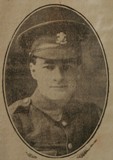
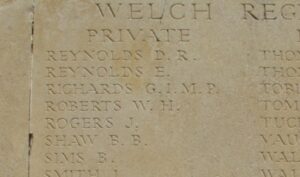
William Lloyd Richards, Pioneer, 195930, Royal Engineers. William was the son of the Reverend David and Evangeline Richard. He lived at St. Dogmaels prior to the war, and enlisted in Cardigan into the Royal Engineers. William was posted to No. 3 Special Company, which was a Gas Company, the Chemical Warfare experts of the time. The Great War was the first in which chemical weapons were deployed. There was great moral shock and outrage at the first use of Chlorine, released by the Germans against defenceless French troops in the Ypres Salient. The Special Companies of the Royal Engineers were formed to develop the British response. By 1918, gas was used both offensively and defensively, delivered by a range of sophisticated techniques. William was wounded before the end of the War, and Died of Wounds at home on 6 October 1919, aged 22. He is buried at Glanrhyd Calvinistic Methodist Chapelyard.
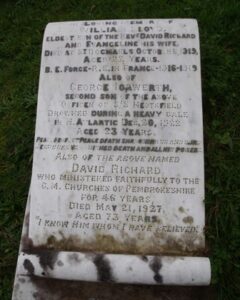
Thomas Thomas, Captain, Welsh Regiment. Thomas was originally from Cardigan, the son of John and Mary Ann Thomas. The family later resided at Stradey House, Llwynhendy, Llanelly. Thomas was in University at Aberystwyth when he was commissioned into the 13th Battalion, Welsh Regiment, the 2nd Rhondda Battalion. The battalion was raised in August 1914, becoming attached to 114 Brigade, 38th (Welsh) Division the following year. In December 1915 the Division moved to France, and took the line near Fleurbaix, where it was initiated into trench warfare. In June 1916 the Division marched south to the Somme, where it took part in the famous capture of Mametz Wood between 7 to 11 July. It was then moved north, to positions on the Canal Bank at Boesinghe, where it remained for the next twelve months. On 31 July 1917 the Division launched an attack on the Pilckem Ridge, capturing their objectives, with heavy loss of life. After a brief rest, the 13th Welsh moved back into the line on the Steenbeek, and it was here, on 23 August 1917, that Thomas was killed by German shellfire. He was 24 years old, and is buried at Bard Cottage Cemetery, Belgium.
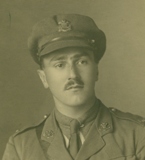
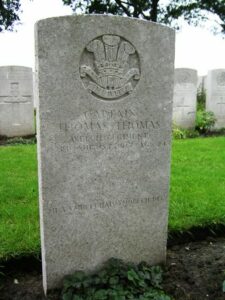
Thomas Walter Thomas, Lance Corporal, 28552, Royal Inniskilling Fusiliers. Thomas was the son of Thomas and Hannah Thomas, of Pencnwcmawr, Eglwyswrw. He enlisted at Leamington into the Welsh Regiment, with the Regimental Number 39547. Thomas later transferred into the 7th Battalion, Royal Inniskilling Fusiliers, attached to 49 Brigade, 16th (Irish) Division. During December 1915 the Division moved to France and concentrated in the Bethune area. They were still in the area when Thomas was killed on 27 April 1916, aged 23. He has no known grave, and is commemorated on the Loos Memorial, France.
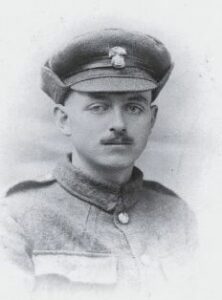
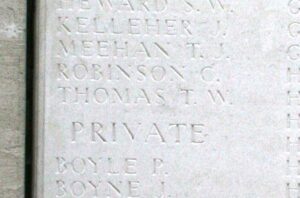
Llewellyn George Tudor, Private, 201594, Tank Corps. Llewellyn was the son of James and Hettie Tudor, of Brynderi, Cardigan. He originally enlisted at Cardigan into the 4th Welsh, and was posted to the Tank Corps. Llewellyn landed in France at some time in 1916, joining I Battalion, Tank Corps. Tanks had first been used on the Somme in 1916, with varying success. Around 60 tanks saw action at the Battle of Arras in April 1917, but proved to be a failure due to the weather. By the summer of 1917 tank numbers had increased and the better Mark IV’s were available, but they again failed at Third Ypres, due to the weather, and mud. On 20 November 1917, an attack was launched at Cambrai, and after a heavy artillery bombardment, 378 Mark IV tanks smashed through the Hindenburg Line positions. Insufficient mobile reserves could get through in time to exploit the tanks success, and within days the chance had gone, the counter-attacking Germans recaptured most of their lost positions. I Battalion was in support of the 20th (Light) Division’s attack. Llewellyn was killed at Cambrai on 23 November 1917. He was 20 years old, and is commemorated on the Cambrai Memorial, Louverval, France.
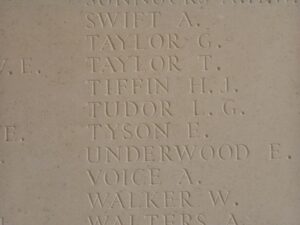
Albert Victor Walker, Private, 2193, Welsh Regiment. Albert was born at Dublin in 1897, the son of Albert Drury Walker and Mary Walker. The family were living at Brontivy, Cardigan by 1906, where Albert’s father worked as a Dentist. Albert enlisted at Cardigan into the 1/4th Battalion, Welsh Regiment, which was the local Territorial Battalion, attached to 159 Brigade, 53rd (Welsh) Division. The Division landed at Cape Helles, Gallipoli, on 9 August 1915, and was immediately thrown into action, spending the next few days in isolated pockets, fighting against a Turkish counter-attack during the Battle of Sari Bair, and then at the Attack on Scimitar Hill. Albert was killed in action here on 10 August 1915, aged 18. He is commemorated on the Helles Memorial, Gallipoli.
Bryn Gwynne Williams, Private, 67515, Cheshire Regiment. Bryn was the son of John and Mary Williams, of Deri House, Eglwyswrw. He worked as a Bank Clerk, and was living at 105, Priory Street, Carmarthen by 1917. He enlisted at Carmarthen into the Welsh Regiment on 10 September 1917. Bryn was then posted to the 48th Training Battalion, and on 3 April 1918 was posted to France, joining the 9th Battalion, Cheshire Regiment, which was attached to 56 Brigade, 19th (Western) Division. The Division was in Flanders, rebuilding from its mauling on the Somme, following the German offensive which began on 21 March 1918. It had then been sent to Messines, to rebuild, but was caught up in the German attack at Messines, which was launched on 7 April 1918 by the Germans. Bryn by now had become dangerously ill, and had been evacuated to the Base Hospital at Étaples for treatment. He sadly died there of pneumonia on 23 April 1918, aged 18. He is buried at Étaples Military Cemetery, France.
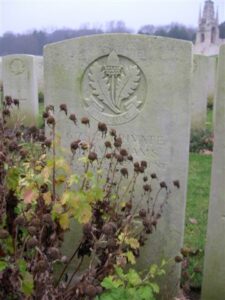
David Matthew Williams, Private, 91420, Durham Light Infantry. David was born on 17 July 1899, the son of William and Martha Williams, of 2, Llynyfelin Cottages, Cardigan. He enlisted into the Royal Welsh Fusiliers on 8 October 1917, and was posted to France, joining the 1/9th Battalion, Durham Light Infantry on 6 August 1918. The battalion was the Pioneer Battalion to 62nd (2nd West Riding) Division. David took part in the advance to victory over the coming weeks. On 12 September the Division captured Havrincourt. Two weeks later it captured Marcoing and Masnières, important crossings of the Saint-Quentin Canal. Further advances were made on 29 September and up to 1 October 1918. On 20 October, the Division was in action once again, this time in the crossing of the River Selle, at Solesmes. By 4 November, the enemy by now being in full retreat, the Division attacked at Orsinval on the Sambre and five days later, the advanced units were entering Maubeuge. Within days of the armistice, David became ill, suffering from influenza. He was evacuated home, but died at Whalley Military Hospital on 10 March 1919. David was just 19 years old, and his body was brought home for burial at Y Ferwig (St. Pedrog) Churchyard.